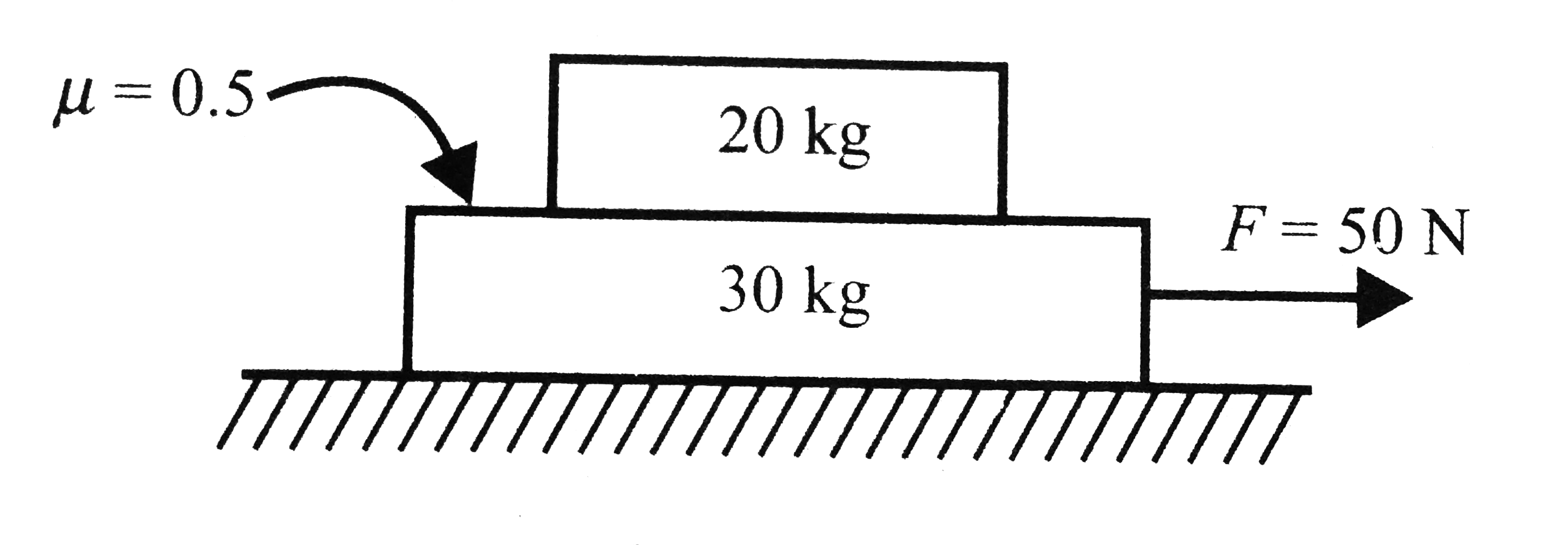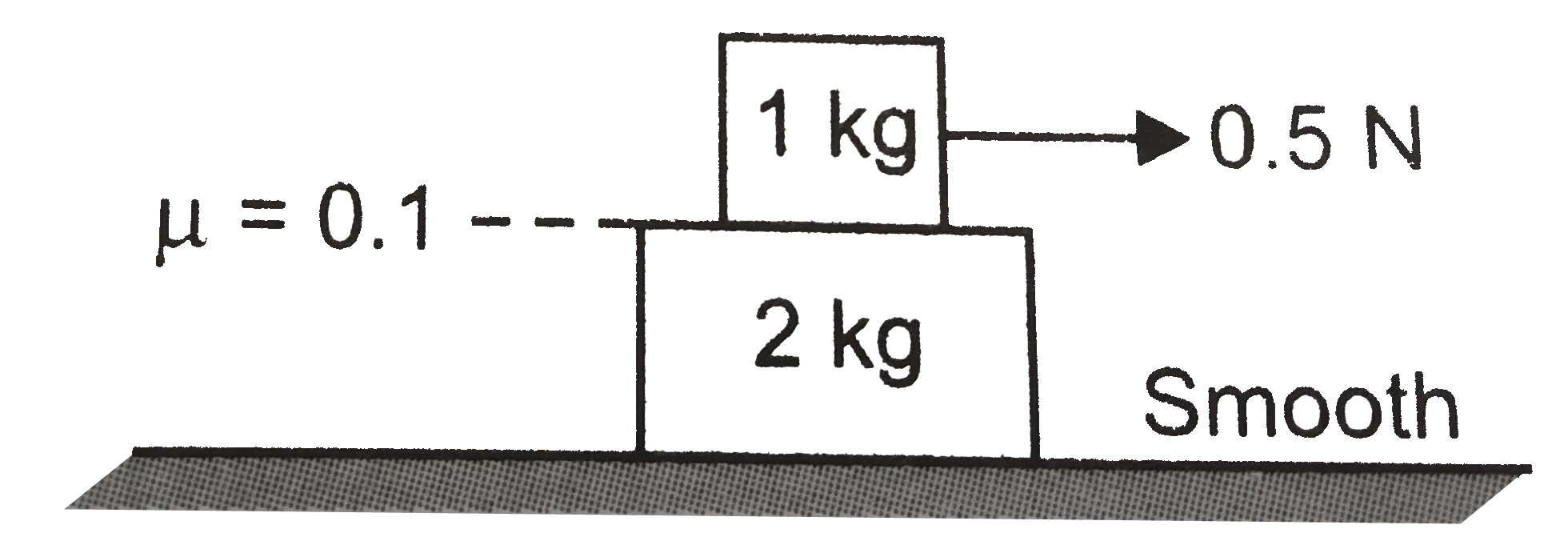A force F is applied on a block of mass M. The block is displaced through a distance d in the direction of the force. What is the work done by the force on the block? Does the internal energy change because of this work? Solution in Tamil
Step by step video & image solution for A force F is applied on a block of mass M. The block is displaced through a distance d in the direction of the force. What is the work done by the force on the block? Does the internal energy change because of this work? by Physics experts to help you in doubts & scoring excellent marks in Class 11 exams.
Updated on:21/07/2023Topper's Solved these Questions
- LAWS OF THERMODYNAMICSBOOK - HC VERMACHAPTER - LAWS OF THERMODYNAMICSEXERCISE - Exercises
22 Videos
- KINETIC THEORY OF GASESBOOK - HC VERMACHAPTER - KINETIC THEORY OF GASESEXERCISE - All Questions
120 Videos
- NEWTON'S LAWS OF MOTIONBOOK - HC VERMACHAPTER - NEWTON'S LAWS OF MOTIONEXERCISE - Exercises
42 Videos
Similar Questions
A thermally insulated, closed copper vessel contains water at 150C. When the vessel is shaken vigorously for 15 minutes, the temprature rises to 170C. The mass of the vessel is 100 g and that of the water is 200 g. the specific heat capacities of copper and water are 420Jkg−1K−1 and 4200Jkg−1K−1 respectively. negalect any thermal expansion.
(a) how much heat is transferred to the liquid-vessel system ?
(b)how much work has been done on this system?
(c ) how much is the increase in internal energy if the system ?
View SolutionCalculate the rms speed of nitrogen at STP (pressure =1 atm and temperature =00C. The density of nitrgoen in these conditions is 1.25kgm−3
View SolutionA block of mass 2 kg placed on a long frictionless horizontal table is pulled horizontally by a constant foerce F. It is found to move 10 m in the first two seconds. Find the magnitude of F.
View SolutionA small block of mass 20kg rests on a bigger block of mass 30kg, which lies on a smooth horizontal plane. Initially the whole system is at rest. The coefficient of friction between the blocks is 0.5. The horizontal force F=50N is applied on the lower block.

a. Find the work done by fricitonal force on upper block and on the lower block in t=2s.
b. Is the magnitude of work done by the frictional force on upper and lower blocks same?
c. Is the work done by the frictional force on the upper block converted to heat or mechanical energy or both?
View SolutionA force of 0.5N is applied on upper block as shown in figure. The work done ( in joule ) by upper block on lower block for a displacement of 3m is :

View SolutionA block of mass m is pulled slowly by a minimum constant force on a rough (μ) horizontal surface through a distance x. Find work done by force F.
View SolutionA force of F = 0.5 N is applied on lower block as shown in figure. The work done by lower block on upper block for a displacement of 6m of the upper block with respect to ground is (in J). (Take g = 10 m//s^(2) ).
View SolutionA force of F=0.5 N is applied on lower block as shown in figure. The work done by lower block on upper block for a displacement of 3 m of the upper block with respect to ground is (Take, g=10 ms−2)

View SolutionA block of mass m is taken from A to B under the action of a constant force F. Work done by this force is
View Solution2.5 किग्रा द्रव्यमान का एक गुटका क्षैतिज सकने तल पर क्षैतिज से 45∘ कोण पर नियत बल 16 न्यूटन लगाकर 2.82 मीटर विस्थपित किया जाता है। ज्ञात कीजिये-
(i) आरोपित बल द्वारा कृत कार्य
(ii) गुरुत्व बल द्वारा कृत कार्य
(iii) तल की अभिलम्ब प्रतिक्रिया द्वारा कृत कार्य
(iv) गुटके पर किया गया नेट कार्य
View Solutionm द्रव्यमान के ब्लॉक को किसी रस्सी की सहायता से g4 त्वरण से नीचे उतारा जाता है। ज्ञात कीजिये -
(1) गुरुत्वीय बल द्वारा ब्लॉक पर किया गया कार्य
(2) रस्सी द्वारा ब्लॉक पर किया गया कार्य
(3) ब्लॉक पर किया गया कार्य |
View SolutionA cord is used to vertically lower an initially stationary block of mass M at a constant downward acceleration of g/4. When the block has fallen a distance d, find (a) the work done by the cord's force on the block, (b) the work done by the graviational force on the block, (c) the kinitic energy of the block, and (d) the speed of the block.
View SolutionA block of mass m is pulled along a horizontal suface by applying a force at an angle q with the horizontal. If the block travels with a uniform velocity and has a displacement d and the coefficient of friction is mu , then the work done by the applied force is
View SolutionA block of mass m is pulled along a horizontal surface by applying a force at an angle q with the horizontal. If the block travels with a uniform velocity and has a displacement d and the coefficient of friction is μ then the work done by the applied force is
View SolutionA block of mass m is pulled along a horizontal surface by applying a force at an angle q with the horizontal. If the block travels with a uniform velocity and has a displacement d and the coefficient of friction is μ then the work done by the applied force is
View SolutionA block of mass m is pulled along a horizontal surface by applying a force at an angle theta with the horizontal. If the block travels with a uniform velocity and has a displacement d and the coefficient of friction is mu , then the work done by the applied force is
View Solution
